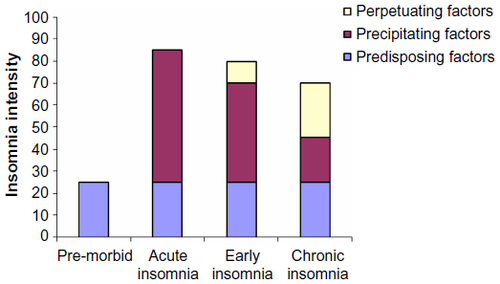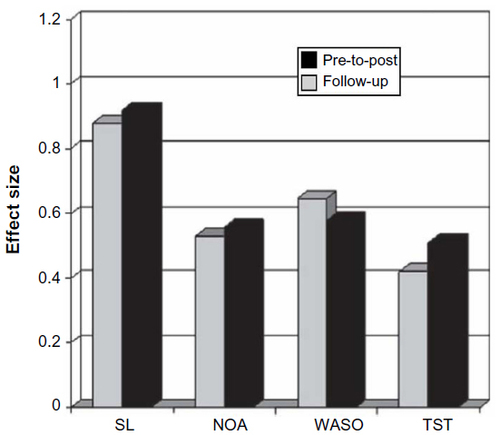Figures & data
Table 1 Criteria for insomnia disorder according to the Diagnostic and Statistical Manual of Mental Disorders, Fifth EditionCitation1 and the International Classification of Sleep Disorders, Third EditionCitation2
Table 2 Psychological and behavioral therapies for insomnia
Table 3 Treatment modalities of cognitive behavioral therapy for insomnia and key controlled trials


